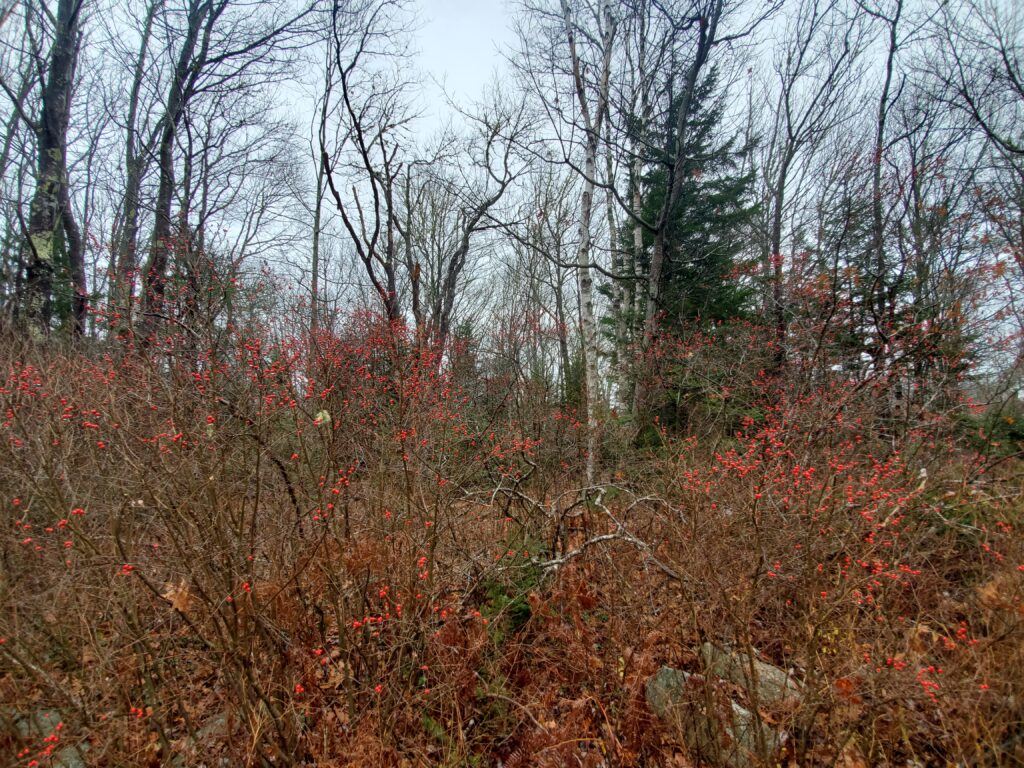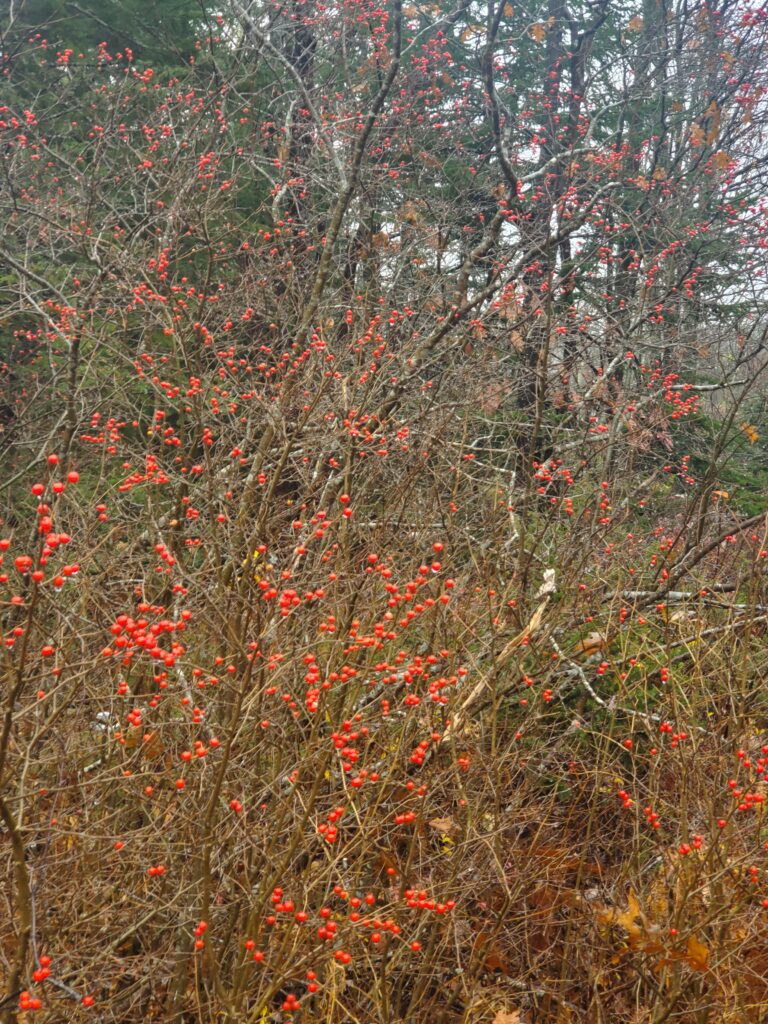December 2, 2021: The Wow Factor of Winterberry

Winterberry grows along the road on Southport
When the holidays come around, many people turn to the woods to help decorate. White pine, balsam fir, red spruce, and cedar are some of the local trees whose boughs find their way into wreaths and swags. Often punctuating the greenery of these displays are branches of small red berries from a native shrub that is part of the holly family. The common name of this plant is winterberry, a nod to the persistence of the plants fruit which can often be seen throughout the colder months.
Winterberry is most noticeable along our roadsides this time of year, where its stark grey branches end in dense clusters of round red berries. This shrub will tolerate extremes in soil moisture, such as the occasional flooding and periods of dryness found in ditches. The plant is also found in swamps, damp thickets, and low woods where it is slow growing, often forming large thickets up to 12 feet fall.

A close up picture of the winterberry fruit
Like other plants in the holly family, winterberry has separate male and female plants, and both are needed in close proximity to make berries. Unlike the hollies seen in landscaping which have evergreen leaves, winterberry leaves turn black with the first frost and drop off. This seems to make the bright red berries even more noticeable, especially to the 49 species of birds that will devour them throughout the winter. Frequent songbird consumers include eastern bluebirds, hermit thrushes, American robins, catbirds, northern mockingbirds, brown thrashers, cedar waxwings, and white-tailed sparrows.
Raccoons and white-footed mice also enjoy the fruits and seeds on the winterberry shrub. Henry David Thoreau once observed the mice eating winterberry, writing that they “run up the twigs at night and gather this shining fruit, take out the small seeds, and eat their kernels at the entrance to their burrows.” Because the berries are relatively low in fat content, they are often taken late in the winter when other fruits are scarce. This translates into a longer period in which we can enjoy the wow factor of winterberry.




